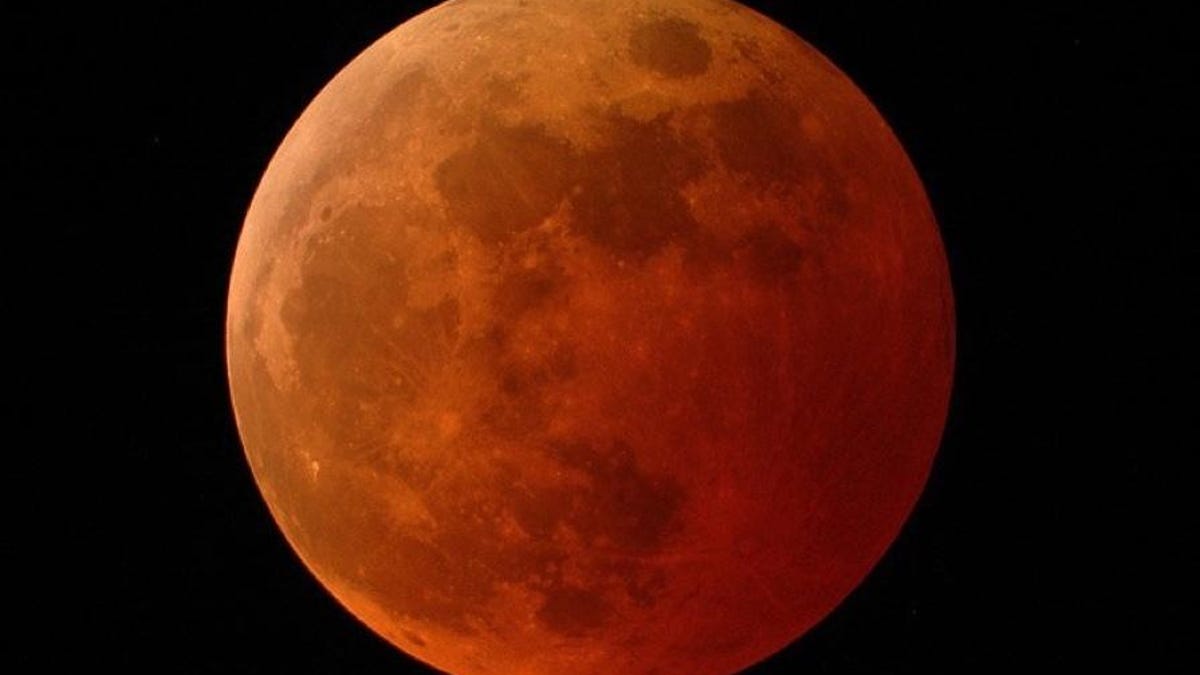Friday's full 'buck' moon could rise reddish across much of the US
Wildfire smoke in the skies could turn the full moon into an orange or red lantern.

A NASA image of a "blood moon" blushing red. This is the result of an eclipse, but the full moon of July 2021 could look similar due to wildfire smoke in the atmosphere.
Large areas of the US and Canada are seeing hazy skies as smoke from Western wildfires spreads across North America. The atmospheric haze has been turning sunsets red and giving the moon an orange or reddish appearance. This Friday's full moon could emphasize the moon's unusual color.
Here in New Mexico on Wednesday night, I saw a haze-covered moon with a strong orange-yellow color and a red halo around it. It could look even more dramatic as it rises full this Friday in areas that are impacted by smoke.
The July full moon is sometimes called the "buck" moon, a name popularized by the Farmers' Almanac. The name references the growth of the antlers on buck deer in the northern hemisphere. According to NASA, other names from around the globe include Thunder Moon, Hay Moon and Mead Moon.
While the buck moon will reach its peak on Friday at 7:37 p.m. PT, NASA says it'll appear full from Thursday evening through Sunday morning. Red moons are familiar to lunar eclipse viewers, who are treated to what's known as a "blood moon" when a total eclipse turns the moon a rosy hue. But smoky skies are a different matter.
Wildfire smoke can also affect the look of the sun. NASA explained what's happening with this during another rough wildfire season, in 2017: "The smoke particles from the fires allow sunlight's longer wavelength colors like red and orange to get through while blocking the shorter wavelengths of yellow, blue and green. Those longer wavelengths give the sky a red or orange tinted appearance." The effect can become more pronounced at sunset and sunrise.
Though the spread of wildfire smoke is sobering news, it could create some memorable full moon views. Just keep in mind what's causing those colors.
Follow CNET's 2021 Space Calendar to stay up to date with all the latest space news this year. You can even add it to your own Google Calendar.

